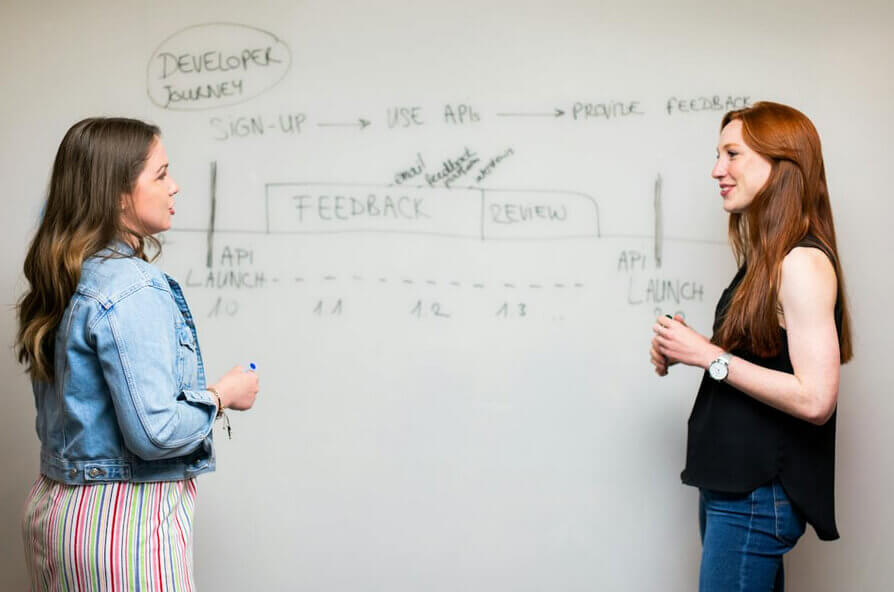
Ensuring the highest level of product quality and process efficiency is paramount. Manufacturers across various industries strive to fine-tune their production processes to maximize productivity while minimizing defects. To achieve this, they turn to different statistical methods and tools, one of which is the Design of Experiments (DOE) technique.
DOE, a powerful statistical technique, enables manufacturers to systematically analyze and optimize manufacturing processes by studying the interrelationships between input variables and output responses. It provides a structured approach to identify and understand the vital process parameters that significantly impact product quality and process capability. By studying these relationships, manufacturers can make informed decisions and implement necessary improvements to enhance product quality and reduce process variability.
Takeaways
- DOE is crucial for identifying how various factors affect process outcomes, enabling optimization.
- Proper planning, execution, and analysis of experiments are essential steps in the DOE process.
- Adhering to best practices and avoiding common pitfalls enhances the effectiveness of DOE applications.
- Statistical analysis tools like ANOVA and regression analysis are invaluable for interpreting DOE results and guiding process improvements.
Key Principles of DOE for Process Capability

Image Source: Freepik
The Design of Experiments (DOE) is a systematic method used to investigate processes where the goal is to identify the conditions that produce the best outcome. The application of DOE in process capability analysis hinges on several key principles that ensure experiments are both practical and efficient. Here, we delve into these principles comprehensively yet in an easily understandable manner.
1. Principle of Randomization
Randomization is a fundamental principle of DOE that helps mitigate the effects of nuisance variables—those not being directly studied but can influence the outcome. Randomly assigning treatments or conditions to experimental units minimizes the impact of these extraneous variables across the treatment groups, ensuring that the observed differences in outcomes can be more confidently attributed to the variables under study.
2. Principle of Replication
Replication involves repeating the experiment or parts of the experiment to ensure that the results are reliable and not due to random chance. This principle is crucial for assessing the process’s variability and providing a more accurate estimate of the effect sizes. Replication can be performed by repeating the entire set of experiments or by including multiple observations under the same experimental conditions.
3. Principle of Blocking
Blocking is a technique used to account for variability introduced by known sources that are not of primary interest but could affect the experiment’s outcome. By organizing experimental units into blocks such that units within each block are similar concerning one or more nuisance variables, researchers can effectively isolate the effects of the variables of interest. This approach enhances the accuracy of the experiment by controlling for known sources of variation.
Steps in Conducting a DOE

Image Source: Freepik
Design of Experiments (DOE) is a strategic process improvement and optimization approach. Understanding and executing the steps properly is crucial for beginners aiming to leverage DOE for assessing and enhancing process capability. Below is a guide to the actionable steps in conducting a DOE tailored for beginners.
Step 1: Define Your Objectives
- Clarify Your Goals: Start by specifying what you want to achieve with the DOE. This could be understanding the effect of process variables on output, improving product quality, or reducing production time. Clear objectives guide the design and execution of your experiment.
- Identify the Response Variable: Determine what outcome or measure of performance you will study. This could be anything from machine output rate to product defect rate.
Step 2: Select Factors, Levels, and Responses
- Identify Factors: List all the process variables you believe influence the response variable. These could include material types, machine settings, temperature conditions, etc.
- Choose Levels for Each Factor: Decide on the different conditions or settings (levels) you will test. Typically, you might start with two levels per factor (e.g., high and low), but more can be chosen based on the complexity of the process.
- Define Responses: Clearly define how you will measure the outcome of each experiment. The response should be quantifiable and directly related to your objectives.
Step 3: Choose the Experimental Design
- Select a Design Type: Choose an appropriate experimental design based on your objectives and the number of factors and levels. A full factorial design (testing all possible combinations of factors and levels) might be most insightful, though resource-intensive for beginners. Fractional factorial designs can reduce the number of experiments by focusing on the most significant factors.
- Plan for Randomization: Ensure your experimental plan includes randomization to reduce bias and the effects of uncontrollable factors.
Step 4: Execute the Experimental Plan
- Prepare Materials and Equipment: Gather all necessary materials, calibrate equipment, and ensure everything is in place for conducting the experiments.
- Run Experiments: Follow your experimental design, conducting each run according to the plan. Apply randomization and maintain consistent conditions to the extent possible.
Step 5: Collect and Analyze Data
- Record Results: Document the outcomes of each experiment run, along with any observations or anomalies.
- Analyze Data: Interpret the data using statistical analysis tools. Analysis of variance (ANOVA) is commonly used to determine which factors significantly affect the response. Look for patterns, relationships, and interactions between factors.
Step 6: Interpret Results and Make Decisions
- Draw Conclusions: Based on the analysis, conclude which factors are most important and how they influence the process capability.
- Plan for Improvement: Identify potential adjustments to process variables that could improve the outcome. If necessary, consider conducting additional experiments to refine your understanding.
Step 7: Implement Changes and Monitor Results
- Apply Findings: Implement the changes identified as likely to improve the process.
- Monitor Process Performance: Monitor the process performance indicators closely to ensure the changes have the desired effect.
Case Study
In a manufacturing company aiming to reduce the defect rate in one of their flagship products, the team applies the outlined DOE steps as follows:
- Objective Definition: The goal is defined to reduce the product’s defect rate from 5% to below 2%, with the defect rate as the primary response variable.
- Selection of Factors and Levels: The team identifies three key process variables believed to impact the defect rate: material quality (high and low grade), machine calibration settings (precise and standard), and ambient temperature (controlled and variable). Each factor is tested at two levels.
- Experimental Design Choice: A fractional factorial design is chosen to efficiently explore the most significant factors with limited resources, incorporating randomization to minimize bias.
- Execution and Data Collection: Experiments are conducted according to the plan, and the defect rate observed under each set of conditions is carefully documented.
- Analysis and Interpretation: Using ANOVA, the analysis reveals that material quality significantly impacts the defect rate, whereas the effects of machine settings and temperature are less pronounced.
- Implementation and Monitoring: The company decides to use higher-grade materials consistently, reducing the defect rate to 1.8%. Continuous monitoring confirms the improvement’s sustainability.
This scenario showcases the power of a structured DOE approach in solving complex quality issues, demonstrating how systematic experimentation can lead to actionable insights and significant process improvements.
Analyzing DOE Results for Process Improvement

Image Source: Pexels
Once the Design of Experiments (DOE) is conducted, analyzing the results becomes the pivotal step toward translating data into actionable process improvements. For beginners, understanding how to analyze DOE results effectively is crucial for making informed decisions that can lead to significant enhancements in process capability. This section provides a detailed guide on analyzing DOE results, making the process understandable and actionable.
Step 1: Validate the Experimental Data
- Check for Completeness: Ensure that data from all experimental runs are collected and accurately recorded.
- Assess Consistency: Look for any inconsistencies or outliers in the data that may indicate experimental errors or unexpected variations in the process.
Step 2: Perform Statistical Analysis
- Use Analysis of Variance (ANOVA): ANOVA is a statistical technique used to identify significant factors that affect the response variable. It helps distinguish between the effects of random variations and those caused by changes in the process variables.
- Apply Regression Analysis: Regression analysis helps understand the relationship between the response variable and one or more predictor variables. It is useful for modeling and predicting the outcome of process changes.
Step 3: Interpret the Results
- Identify Significant Factors: Based on the statistical analysis, determine which factors significantly impact the process output. These are the variables where changes are most likely to improve process capability.
- Understand Factor Interactions: Look for interactions between factors where one variable’s effect depends on another’s level. Understanding these interactions is crucial for optimizing process conditions.
Step 4: Determine Process Capability Improvements
- Estimate Effects on Process Capability: Use the analysis to predict how changes to significant factors will affect process capability indices (Cp, Cpk). This step involves applying the DOE’s insights to estimate process performance improvements.
- Plan for Optimization: Identify the optimal significant factors for achieving the best process performance. Consider using response surface methodology (RSM) for processes with complex interactions.
How to Section: Detailed Analysis Techniques
Analyzing Variance (ANOVA)
- Prepare Data: Organize your experimental results in a format suitable for ANOVA analysis, typically a table showing each treatment combination and corresponding responses.
- Compute Sum of Squares: Calculate the sum of squares for each factor to measure the variance contributed by each.
- Calculate F-values: Use the ratio of mean squares (variance) between groups to within groups to find F-values, which indicate the statistical significance of each factor.
Regression Analysis
- Select Model: Choose a regression model that fits your experimental design and objectives. Linear regression is common, but nonlinear models may be necessary for complex relationships.
- Fit the Model: Use statistical software to fit the model to your data, estimating the coefficients for each predictor variable.
- Evaluate Model Fit: Check the model’s adequacy by assessing R-squared values and residuals to ensure the model accurately represents the data.
Best Practices and Common Pitfalls in DOE Application

Image Source: Pexels
The successful application of the Design of Experiments (DOE) in process capability analysis hinges on a well-structured experimental design, adherence to best practices, and avoiding common pitfalls. This section outlines essential guidelines and warnings to ensure the effectiveness of DOE efforts, structured to provide a comprehensive understanding for practitioners at all levels.
Best Practices for Effective DOE
Clearly Define Objectives
Focus on Goals: Before starting, articulate clear, measurable objectives for what the DOE should achieve. This ensures that the experiment is designed with a purpose, whether it’s to improve process yield, reduce variability, or something else.
Choose Appropriate Design
Select Wisely: Pick an experimental design that matches the complexity of the process and the objectives. Start with simpler designs for initial explorations and consider more complex designs as your understanding deepens.
Ensure Proper Planning
Plan Thoroughly: Spend adequate time in the planning phase to identify all relevant factors and their levels. This step is crucial for avoiding incomplete experiments or missing key insights.
Apply Randomization
Randomize Experiments: To mitigate the effects of uncontrolled variables, implement randomization in the order of experimental runs. This practice helps in obtaining unbiased results.
Utilize Replication and Blocking
Replicate for Reliability: Conduct replicates of experiments to estimate experimental error and enhance the reliability of your findings.
Block to Reduce Noise: Blocking can be used to control for known sources of variability, improving the experiment’s sensitivity to the factors under study.
Analyze Data Rigorously
Use Statistical Tools: Leverage statistical analysis software to examine the data rigorously. Tools like ANOVA and regression analysis are invaluable for interpreting results accurately.
Common Pitfalls to Avoid
Overlooking Interaction Effects
Consider Interactions: Failing to account for how factors might interact can lead to incomplete conclusions. Interaction effects can be as significant as the main effects of individual characteristics.
Neglecting Proper Analysis
Avoid Rushed Analysis: Rushing through the data analysis phase or using inappropriate statistical methods can lead to incorrect interpretations of the results.
Ignoring Experimental Errors
Account for Errors: Not considering the potential for experimental error can overstate the significance of findings. Ensure that replicates are used to assess the variability in the data.
Inadequate Documentation
Document Thoroughly: Poor documentation of the experimental design, process, and results can hinder the ability to review or replicate the study. Maintain detailed records throughout.
Resistance to Iteration
Be Open to Iteration. DOE is often an iterative process. Resisting adjusting the experimental design based on initial findings can limit the depth of insights gained.
Conclusion
The Design of Experiments (DOE) is an essential methodology for improving process capability. It provides a systematic approach to identifying the effects of various factors on process outcomes. By implementing DOE, businesses can achieve a deeper understanding of process behaviors, enabling the optimization of operational efficiencies and product quality.
This guide has delineated the foundational principles of DOE, outlined actionable steps for conducting experiments, and emphasized the importance of analyzing results with statistical rigor. Adopting best practices and avoiding common pitfalls are crucial for effectively leveraging DOE.
Through careful planning, execution, and analysis of experiments, organizations can make informed decisions that enhance process capability, thereby achieving significant improvements in performance and competitiveness.
At Air Academy Associates, we are committed to empowering professionals like you with the skills and knowledge to excel in operational efficiency and process optimization. Our Operational Design of Experiments (DOE) Course is meticulously designed to teach you how to effectively plan, design, conduct, and analyze experiments, maximizing learning while minimizing resources. Whether your goal is screening, modeling, or validating processes, our course offers the tools and techniques essential for success.


